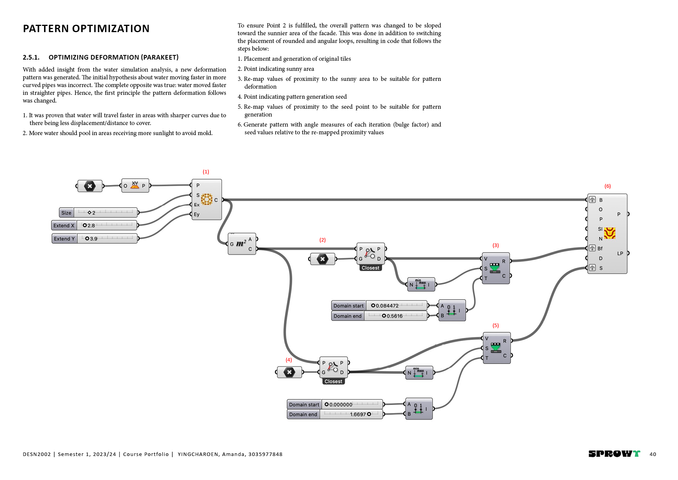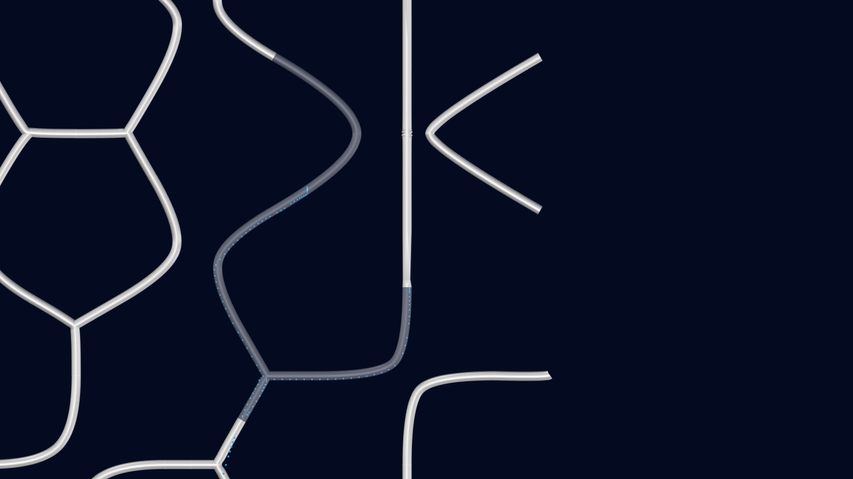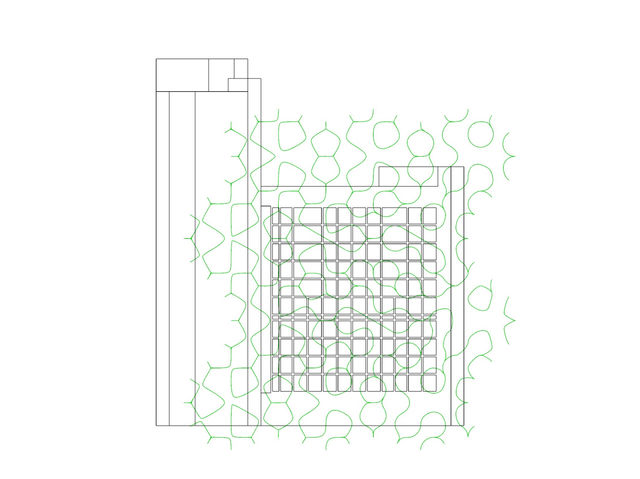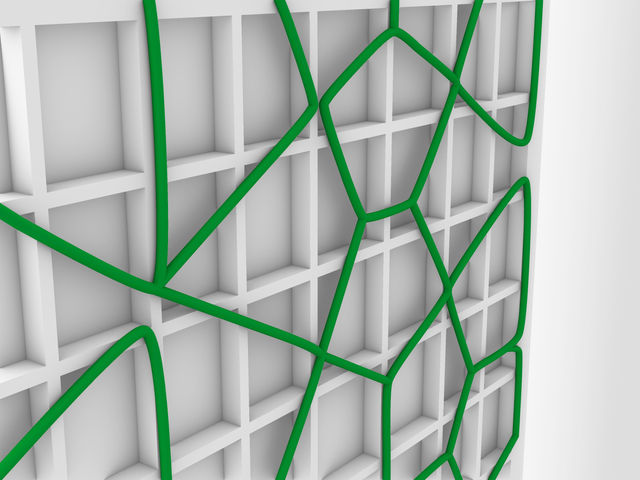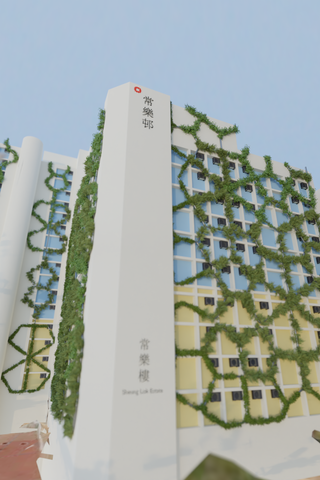"To me, Sprowt was an introduction to the transformative power of 3D modeling tools in shaping one's design process."
- Ellice Ang
"An eye-opening social project done with amazingly syngergistic team members that I'd definitely want to work with again. 10/10."
- Philip Li
As recent technological evolutions are radically reshaping all aspects of the design profession, it is essential for future generations to not only explore the potential of latest advancements but also gain a critical understanding of new modes of operation. This course explores contemporary methods and tools for the generation, storage, analysis, and manipulation of data as drivers for interdisciplinary design and innovation, and the ethical implications of mining and monetising big data. Set up as a design research seminar, the course investigates how latest technology is creating a paradigm shift in the conceptual stages of design.

Task 1
procedural modeling tools
by Amanda Yingcharoen
Before we dive into the big project, we had to learn the barebone basics of Grasshopper. Not the jumpy insect kind of grasshopper, but the node-based programming interface for Rhino kind of Grasshopper. And don't even get me started on Rhino (click here to see more stuff I made with that). Yes, they're all named after animals, and no explanation will be given as to why. Anyways, below are the portfolio pages I made covering the basics of Grasshopper that I learned throughout this course!
Task 2
Evaluation and analysis tools
by Amanda Yingcharoen, Ellice Ang, and Philip Li
Now that we've covered the basics, let's take it up a notch. The bulk of DESN2002 was spent executing a group project. Ellice, Philip, and I came together to form the dream team behind SPROWT, a hydroponics facade designed to collect air conditioner water from Sheung Lok estate in Kowloon, Hong Kong. We each tackled a specific part of the project using various Rhino, Grasshopper, and Blender tools.
SPROWT began at Sheung Lok estate. More specifically, constructing Sheung Lok's neighborhood virtually. I began with modeling the estate itself while Ellice used Blosm, a Blender plugin, to download and use Google Maps data to model everything around it.
Once the neighborhood is reconstructed in Rhino, the real fun begins. To make a hydroponics facade, we'd need some plants, but the plants also have their own needs. Think back to your elementary school science class, what do plants need? Carbon dioxide, sunlight, and water. Given the state of our global emissions nowadays, we're not gonna be short of carbon dioxide anytime soon. However, the sunlight and water are a bit less guaranteed. Hence, a bit of analysis has to be done to ensure these conditions are met for our plants.
Philip took the first big step to kick start our analysis. He used a Grasshopper extension called Ladybug (I am not making up these names, I promise) to run a sunlight analysis on our beloved building and its surroundings. Because of this, we realized that certain parts of the estate received little to no sunlight at all. So we really didn't bother with those areas for the rest of the project.
Now that we have an idea of how much sunlight the building receives, we can decide where to put the plants and how they're gonna look. This is where I come in with Parakeet, another Grasshopper plug-in (surprise, surprise) named after an animal. Parakeet generates patterns based on inputs we give to it, and this pattern will become the structure that the hydroponic pipes will be shaped into. We wanted to make the facade resemble the look of plant cells to further drive home the connection between our hydroponic plants and... well... other plants. Just plants in general really. Anyways, I had a couple tries (and many computer crashes) at this pattern generation thing and you can see what I came up with below.
Okay, we have a structure, sufficient sunlight, and copious amounts of carbon dioxide, but something's still missing.... the water, of course! This is where Ellice returns to perform some of her magic with Flexhopper, another Grasshopper plug-in (surprisingly not named after an animal). She analyzed how well my facade was going to transport water around the entire building front by simulating water particles with Flexhopper. After hours and hours of hard work, the computer crashed. And then it crashed again, and again, and... you get the point. There were more crashes than we can count by the time our midterm review came around. So, something had to be done for the analysis to continue. Well, if all the water couldn't be simulated at the same time, can at least some of it be simulated? Thankfully, Ellice and her computer magic made that work! Her wizardry produced this highly satisfying video of the particles traveling through the tubes.
After Ellice's analysis, I went back to the drawing board. My initial design just didn't work, or at least not nearly as well as we wanted it to. So I generated a couple more patterns based on the Flexhopper results. Little by little, the final SPROWT facade began to take place.
Task 3
Advanced Applications of Computational Design
by Amanda Yingcharoen, Ellice Ang, and Philip Li
SPROWT may exist in our computers, but we're not content with it staying in the digital realm. After all, nothing beats real life, right? My friends and I bought a second-hand 3-D printer recently and I think the universe is trying to tell me it's time we use it. So I did exactly that and more. A section of the tubes implemented in the project was 3-D printed so you can actually put a real plant in it! And if that wasn't enough, Ellice and I laser cut the entire front part of Sheung Lok estate onto plywood and built a physical model out of it too!
Oh, and we're still not done with the digital stuff. As it turns out, Ellice is not the only one capable of some computer sorcery in our group. Philip was hiding some Blender magic up his sleeve. With the help of some SketchFab models, he conjured up these amazingly crisp renders of SPROWT, bringing our hydroponics to life!
Final deliverable
Portfolio
compiled by Amanda Yingcharoen
Alas, our SPROWT baby was born. To document our journey, I made a portfolio talking through every step of the process in excruciating detail (using much more technical terminology than this website). I hope you will enjoy flipping through the pages and reading about all the hard work the three of us put into making SPROWT!



















